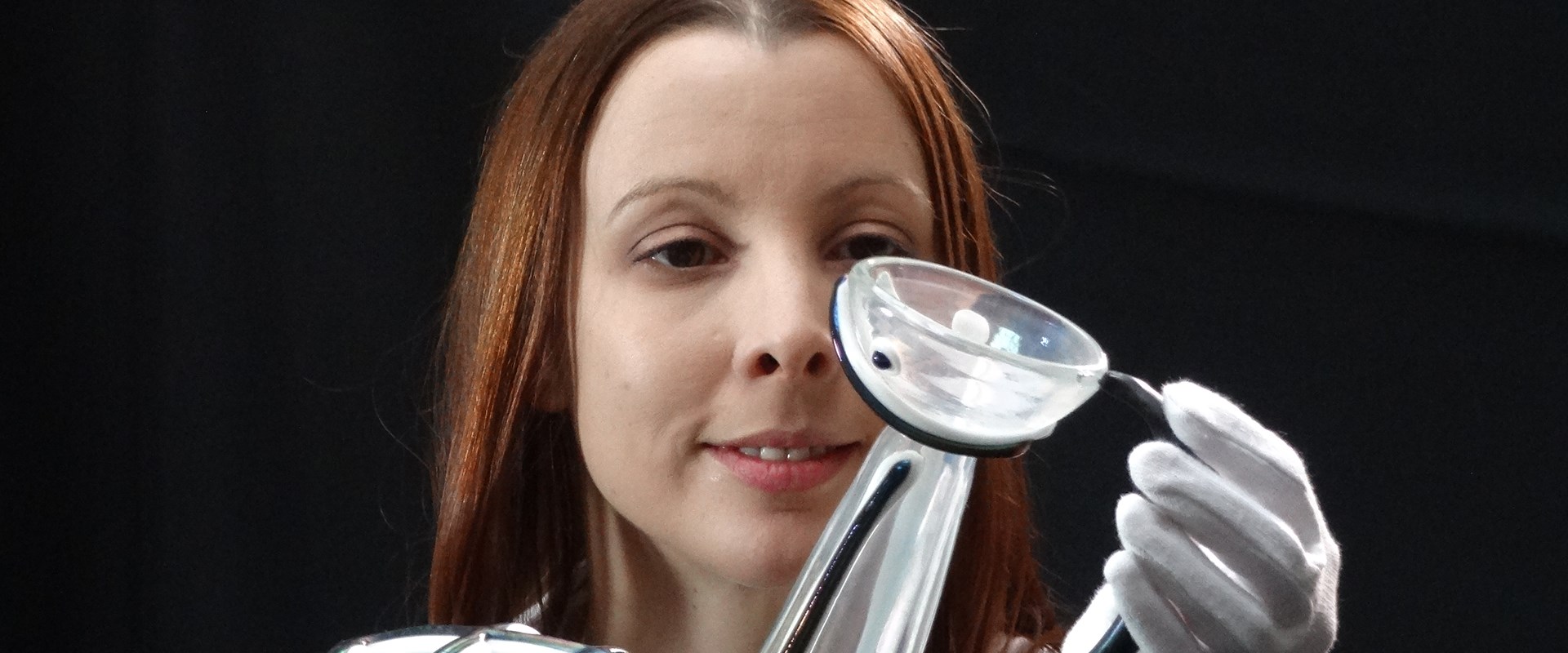National Museums Scotland has acquired a rare piece of glass by Pablo Picasso. Entitled Capra, the object is an abstract take on a sleeping goat, composed of black, white and iridescent glass. It is the artist’s proof; in addition there are seven unique variants.
The sculpture - which was designed by the Spanish artist in 1954 and manufactured by the renowned Italian glassmaker Egidio Costantini, founder of Fucina degli Angeli in Venice - will go on display in one of ten new galleries opening next year at the National Museum of Scotland. Showcasing over 3,000 objects, these innovative new galleries will explore the creativity of applied arts, fashion and design and the excitement of scientific discovery and invention.
Rose Watban, Senior Curator of Modern & Contemporary Art & Design at National Museums Scotland commented:
This rare and important glass sculpture has a luminous, reflective quality which gives it a certain depth and changeability. Glass by Picasso rarely comes on to the market so I am delighted that we have acquired this piece for our new Art and Design galleries, which open in 2016.
Picasso worked collaboratively with Egidio Costantini in a way which echoes his partnership with Suzanne and Georges Ramié, of the Madoura Pottery in Vallauris, France. The two men met in the town in 1954, and their working relationship began when the American art collector Peggy Guggenheim invited Picasso to Venice.
These encounters in Vallauris were pivotal in Picasso’s mature career. At a time when he had established himself as the major artist of the 20th century with his astonishing range of painting and sculpture, he explored new territory via relationships with these master craftspeople.
The Ramiés created large editions of ceramics based on original prototypes made by Picasso, while Costantini translated the artist’s drawings into glass sculptures, which were produced in very limited editions. Many pieces were inspired by spirits, monsters or animals, themes which Picasso was particularly interested in.
Capra will go on display in 2016 in Making and Creating, a gallery exploring the techniques and creative inspirations behind finished works. One of four new Art and Design galleries to open at the National Museum of Scotland next year, Making and Creating will showcase the highlights of National Museums Scotland’s decorative art collections produced since the late 1940s.
Notes to Editors
- National Museums Scotland looks after museum collections of national and international importance and provides loans, partnerships, research and training in Scotland and internationally. Our individual museums are the National Museum of Scotland, the National Museum of Flight, the National Museum of Rural Life and the National War Museum. The National Museums Collection Centre in Edinburgh houses conservation and research facilities as well as collections not currently on display.
- The National Museum of Scotland reopened in summer 2011 following a three-year, £50m redevelopment. With over 6.5 million visitors since reopening, the National Museum of Scotland is the most popular museum in the country outside of London according to ALVA figures.
- An artist’s proof is a term referring to the working trail or first proof of a limited edition of original pieces. They are often kept by the artist themselves or gifted to the craftsmen with whom they collaborated.
Further information and images from Alice Wyllie, Bruce Blacklaw or Brian Maycock, Press Office, National Museums Scotland on 0131 247 4288 or email a.wyllie@nms.ac.uk
Header image: Sarah Rothwell, Assistant Curator of Modern and Contemporary Design, poses with Picasso's Capra © Succession Picasso/DACS, London 2015.

